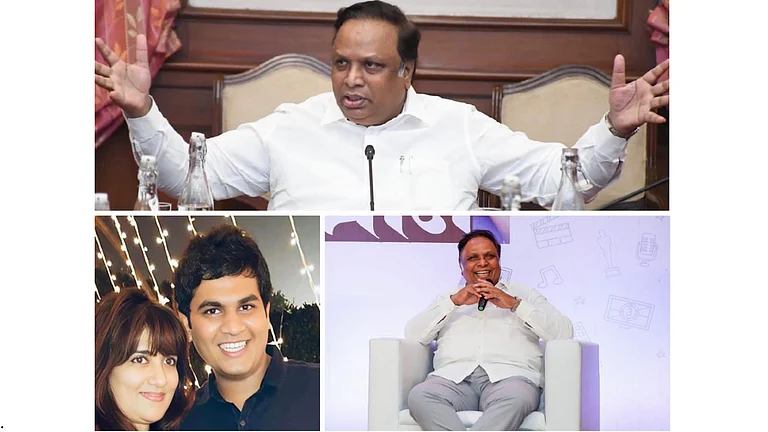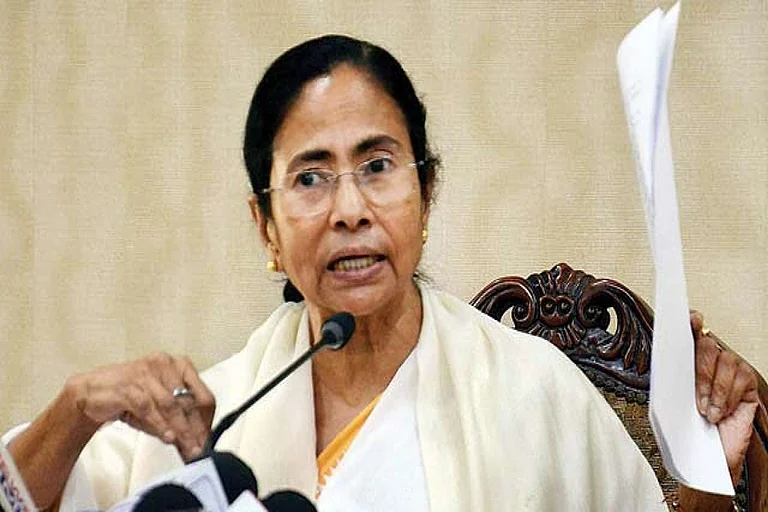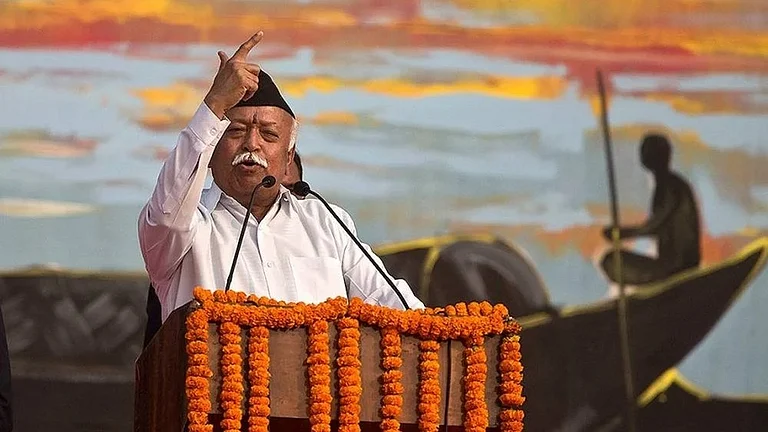Very few filmmakers in India have tried to break away from the conventional template of art cinema. Ashish Avikunthak is one such filmmaker who explores the medium and its aesthetics. However, he does not want to classify himself as an experimental/avant-garde filmmaker. Instead, he prefers the term ‘Prayoga cinema’ like how Mani Kaul preferred his films to be called ‘Shastriya cinema’. Avikunthak has been making films in India since the mid-nineties and his films have been showcased worldwide in film festivals, galleries, and museums. Neru Ratnam writes, “Avikunthak’s films are rooted in Indian religion, philosophy and history, without being about any of these in an anthropological way.” Hindu religious references, quotes, and rituals are not used in his work as part of revivalism. He criticises the religion not from the outside but from the inside.
Avikunthak’s new film Devastated is about a middle-aged Indian policeman who works as a ‘sacrificial assistant’, tasked by the State with extrajudicial killings of Muslim men. The film’s structure consists of confrontational conversations with the man’s wife and his lover. His wife questions and criticises his acts, but he defends himself by quoting the Bhagavad Gita. Elsewhere in the city, Lord Krishna and Prince Arjuna enact a dialogue from the Gita. Paralysed into inaction during battle, Arjuna seeks the counsel of Krishna, who instructs him on the moral duty of a warrior. Added to it is the Central Intelligence Agency’s (CIA) Kubark manual, which describes methods of counterintelligence interrogation (electric shock, threats and fear, sensory deprivation, and isolation) used in Latin America from the 1960s to the 90s. These techniques have been used in India, not just against terrorists and Maoists but even against petty criminals. Avikunthak asks: how has a country that was the forebearer of non-violence transformed into such a violent and intolerant nation?
Devastated was screened at the recent International Film Festival of Rotterdam. P K Surendran spoke to Ashish Avikunthak. Excerpts from the interview:
There are two women in Devastated. One is his wife. Who is the second? Is one a reflection of the other?
One woman is his wife, the other could be his lover or friend. Both share an intimate bond. For me, their relationship offers an escape, or perhaps even an antidote, from the heteronormative and patriarchal violence experienced by the wife. The violence of the encounter specialist also stems from a deep-seated desire for social and national conformity.
Psychologically, extrajudicial killings in India arise from a patriarchal nation seeking to execute citizens who are deemed non-compliant, non-conformist, and disobedient. Despite ample laws to punish delinquent and transgressive citizens, the Indian State resorts to extrajudicial killings, deliberately and systematically annihilating its own citizens without judicial authorisation.
The encounter killings that began during the first Shiv Sena regime were part of the spiral of violence that engulfed Bombay in the 1990s, starting with the riots in 1992–93, followed by the retaliatory Bombay blast on March 12, 1993, orchestrated by the Muslim-led mafia. The encounter killings of the late 1990s were a response to the 1993 Bombay blast. Conducted by just over a dozen police officers, these became infamous as encounter specialists, primarily targeting Muslim criminals in Bombay. By the early 2000s, small-time criminals, alleged terrorists, and suspected Maoists were regularly eliminated in different parts of India. Today, encounter killings in India have become a standard operating procedure for security forces.
In the late 1990s and early 2000s, films by directors such as Ram Gopal Varma, Anurag Kashyap, Tigmanshu Dhulia, and others glorified extrajudicial killings. Following the tabloid press in Bombay, which sensationalised the accounts of encounter specialists, Bollywood turned these extrajudicial state operatives into minor celebrities. These films portrayed the encounter specialist as a heroic figure who rid society of criminals by subverting the law, judiciary, and civil society. My film is a critical response to these popular narratives. It delves into the heart of darkness of an encounter specialist.
Sacrifice appears repeatedly in your film. In Tantrik tradition and other religious rituals, sacrifice is an important part. Are you trying to find the genealogy of violence?
Beyond tracing the genealogy, I am interested in understanding the root causes of violence in India. The question that I often ponder is: how has a country that was the progenitor of non-violence from the times of Mahavira and the Buddha to Gandhi’s era, transformed into such a violent and intolerant nation?
During my time at Stanford University, I gained some insights while attending a class by René Girard, a French historian and literary critic. Girard argues that in order to restore societal harmony and unity, communities often target a group perceived as different or threatening, turning them into scapegoats who are blamed and eventually sacrificed. For instance, the witch hunts during the Black Death in medieval Europe, the Nazi genocide of Jews in response to perceived German decline, and the Hutu massacre of Tutsi minority in Rwanda.
The material for the conversations that the encounter specialist has with the women in this film was drawn from various Hindutva online forums over the past decade. Right-wing handles openly advocate violence against Muslims, justifying it using Hindu theological ideas on social media platforms. In these calls for the annihilation of Muslims from India, I discovered that justifications were often rooted in Hindu religiosity. I have incorporated these rationales into the film’s dialogical structure.
In this film the Bhagavad Gita runs parallelly…
The Bhagavad Gita is not only one of contemporary Hinduism’s most significant philosophical treatises but also holds a wide spectrum of interpretations. With more than a few hundred translations and commentaries published, the Gita has seen a multitude of perspectives, many of which emerged in the past two centuries. I’ve delved into many translations and commentaries, finding the text to be a profound companion in my spiritual journey.
However, it was B R Ambedkar’s radical interpretation of the Gita that truly resonated with me. It became the focal point of this film. At the heart of my films lies the ‘Samkhya Yoga’ section of the Gita. Here, Krishna implores Arjun to transcend the dualities of existence, emphasising the soul’s permanence amidst the transient nature of the body. He urges Arjun to fulfil his duty as a warrior without attachment or sorrow. In his ‘Essays on the Bhagwat Gita: Philosophic Defence of Counter Revolution: Krishna and His Gita’, written in 1927, Ambedkar forcefully argues that the Gita provides a metaphysical exoneration of violence. The guidance that Krishna gives Arjun justifies violence in Hinduism. The world is perishable and man is mortal; therefore, it’s okay to kill your friends and relatives because they are essentially souls and will be reborn again. Ambedkar says that the Gita not only justifies caste violence in India but also provides spiritual and religious rationality for perpetuating caste oppression.
The Bhagavad Gita and Krishna are the new gurus at B-schools and boardrooms as companies look to the scriptures for management strategies. What is the meaning of the Gita’s message in our time for you?
In early 20th-century India, the Bhagavad Gita emerged as a symbolic text for anti-colonial politics. Bal Gangadhar Tilak utilised it to incite political action against the British, while V D Savarkar interpreted sections of the Gita to advocate for violent methods in the quest for independence. Conversely, Gandhi viewed the Gita as representing selfless action, non-attachment, and ethical duty. It’s notable that Gandhi strategically interpreted Gita passages set in the midst of war to formulate his principles of non-violence and satyagraha. In today’s postmodern, neo-liberal, late-capitalistic world, where meaning-making has been reduced to memes and Instagram reels, the Gita has evolved into a free-floating signifier. Its epistemological significance has become detached from its religious essence, rendering its meaning fluid and subject to interpretation, depending on the context in which it is invoked. It should come as no surprise that the Gita is now utilised as a textbook for corporate management.
At a formal level, you borrow from the ritual’s repetitive occurrence and this recreates cyclical temporality in your film. Why do you do that?
Most of the rituals in my film were shot in various parts of rural Bengal during the annual rites of Gajan, Charak Puja, and Kali Puja. Both Gajan and Charak have pre-Hindu origins and may even predate the emergence of Buddhism in this region. Like many rituals in India, they have been assimilated into contemporary Hindu practices. For example, the rituals of animal, plant, and tree sacrifice as well as body modification, self-harm, and penance, are widespread in many parts of the world and are not associated with a single religion. In India these rituals are primarily non-Brahmanical, with most practitioners belonging to lower caste groups in Bengal. Even Kali, a central deity in the Tantrik pantheon, has tribal and lower-caste ancestry in Bengal and Assam. These festivals have often been labelled as folk culture in relation to mainstream Hinduism, a characterisation that is deeply patronising and derogatory. I have sutured the shots of rituals to the narrative of violence, acting like a meta-narrative injunction.
How do you connect Tantra to the contemporary world?
In today’s India, which is being overshadowed by the toxic intolerance of Hindutva, I believe that Tantrik philosophical systems can offer redemption. Hindutva doesn’t represent true Hinduism; it’s more of a corruption and distortion. This political-religious movement is gradually suffocating the diversity within Hinduism. It’s not just about replacing the old with the new; it’s about constructing a modern religion infused by forced orthodoxy.
Hindutva theology relies on distorting historical events and appropriating divine figures. They adeptly weaponise pre-modern religious texts to validate their political agenda, aiming to marginalise religious minorities and reinforce patriarchal, casteist, and exclusionary ideologies. This reinforces existing hierarchies of power and privilege. To challenge the supremacist worldview propagated by Hindutva, we must critically engage with the same religious and pre-modern worldview that they exploit to construct their narrative. I believe Tantrik theology is a radical, non-hierarchical, non-discriminatory philosophical system that can challenge the politico-religious violence of Hindutva. Tantrik philosophy offers an antidote to Hindutva’s toxicity.
You have mentioned the term ‘infra-realism’ in a previous interview. What do you mean by it?
I’m not drawn to realism because I don’t have any desire to replicate the world in my films. Realism reduces cinema to a representational medium rather than a metaphysical vehicle. However, we cannot entirely escape realism in cinema, but we can subvert it. This has been most famously done by Robert Bresson, Mani Kaul, and Kumar Shahani. I refer to this cinematic representation as infra-realism. Realism faithfully represents existence, while melodrama exaggerates and simplifies reality. In contrast, infra-realism marks a radical departure from both, and offers a more tentative, exploratory, and speculative portrayal of existence. It suggests and gestures rather than dictates the relationships between characters and their worlds. In infra-realist narratives, characters are depicted as autonomous beings rather than mere tools of the plot.























